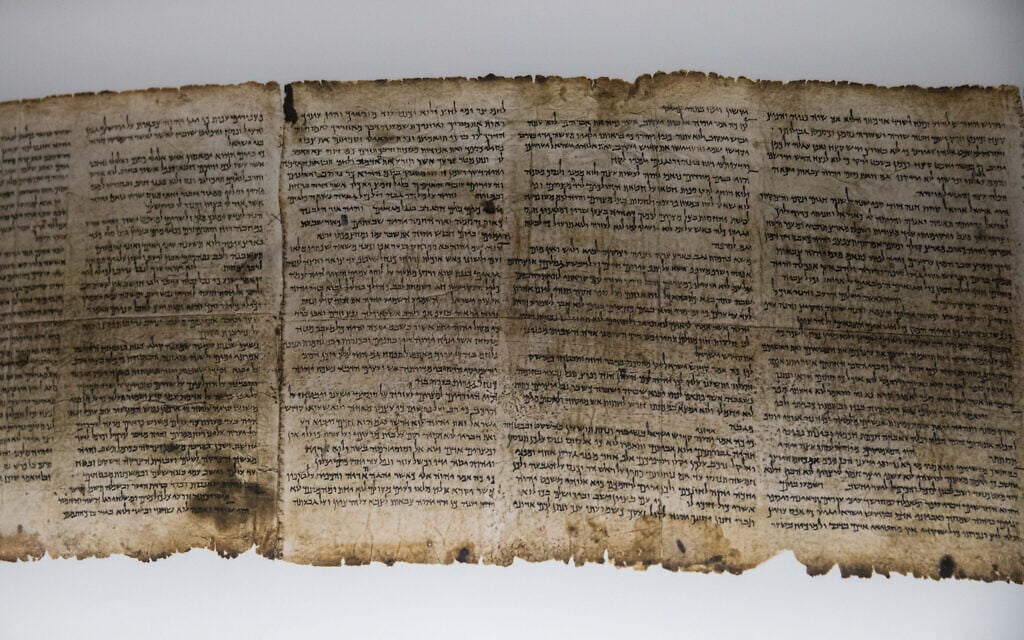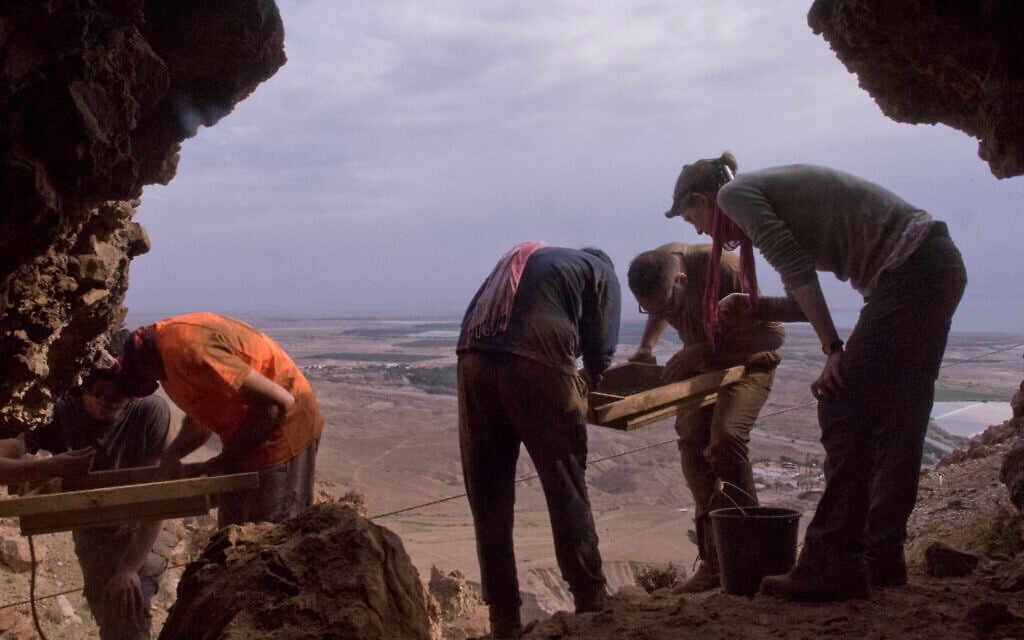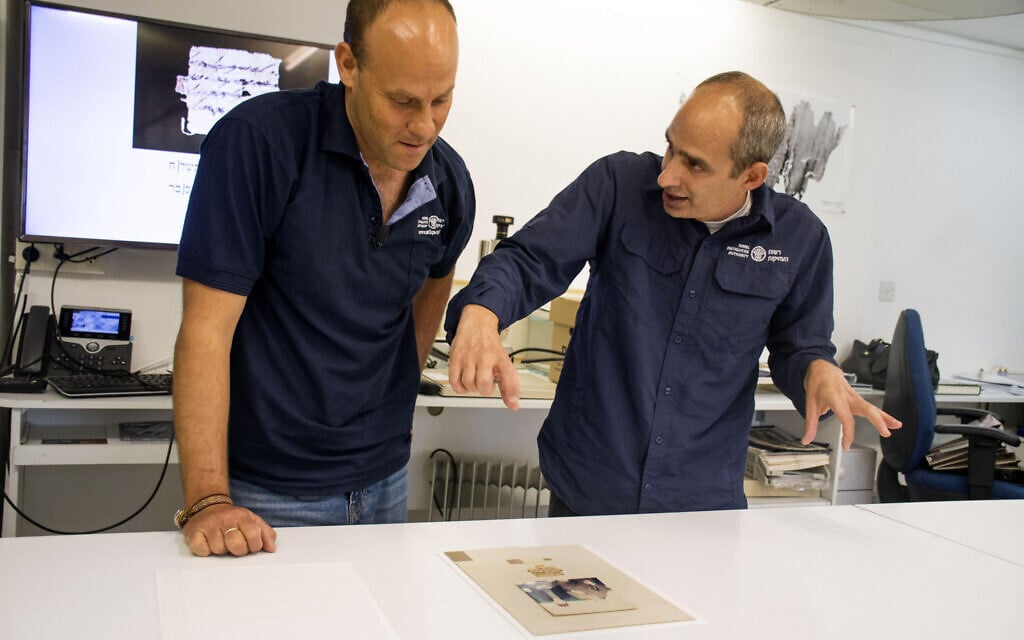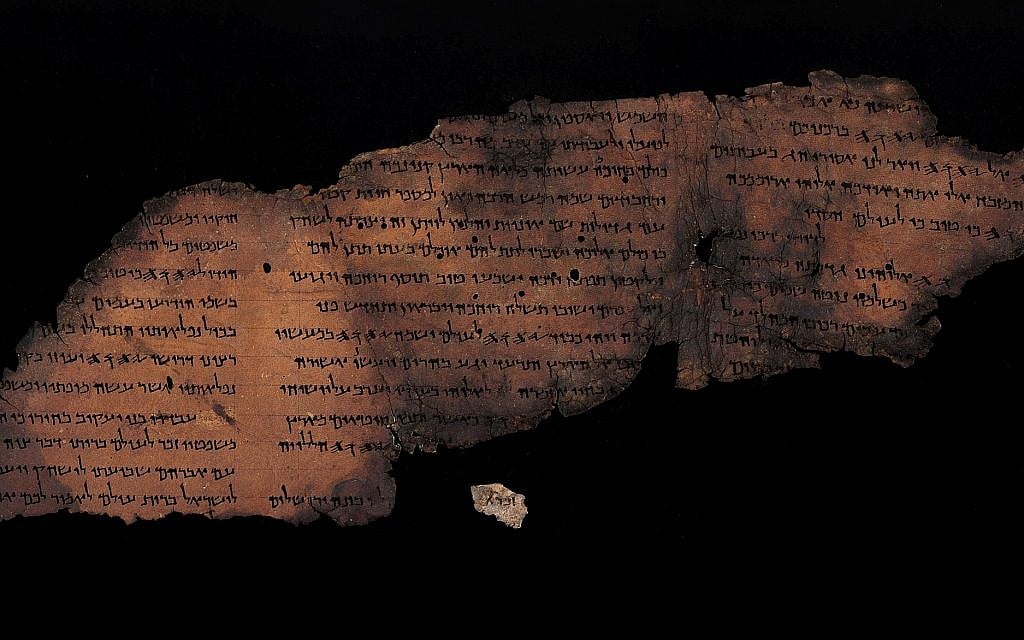THE TIMES OF ISRAEL
By Rossella Tercatin
Trailblazing interdisciplinary system, combining AI and radiocarbon dating, indicates the precious artifacts may have been written decades – or even centuries – earlier than previously believed
The Dead Sea Scrolls may have been written decades — or even centuries — earlier than scholars previously thought, according to a revolutionary study that merges traditional scholarship with artificial intelligence.
The results potentially reshape scholars’ understandings of ancient Israel’s history, a new study published Wednesday on PLOS ONE has shown.
Whereas until now scholars have largely dated the texts based on their paleography — the shape of their lettering — the interdisciplinary research team started its study by carbon dating pieces of parchment from 30 of the scrolls held by the Israel Antiquities Authority.
Once these dates were procured, high-resolution images of the Hebrew and Aramaic lettering from the securely dated scrolls were fed into an AI data-prediction model whimsically named “Enoch.”
The Enoch model, using geometry-based character shape analysis to learn the paleographic characteristics of the timestamped scrolls, could then extrapolate their paleographic shapes and date other scrolls that have not yet undergone destructive radiocarbon testing.
The system was used to investigate high-resolution images of an additional 135 scrolls. When checked by human paleographers, Enoch’s suggested dating was found to be 79% accurate.
“Our goal was to solve the problem of dating the Dead Sea Scrolls,” said Prof. Mladen Popović, director of the Qumran Institute at the University of Groningen in the Netherlands and one of the authors of the study.
“We thought of combining different disciplines, including radiocarbon dating and physics, artificial intelligence analysis, paleography, history and philology to reach the result,” he told The Times of Israel over a video interview. “It’s really been a team effort.”
The new open-source Enoch model opens unprecedented opportunities to re-examine the chronology of hundreds of scrolls uncovered in the Judean Desert over the decades, the authors of the study told The Times of Israel.
The first results of the project have already revealed that two biblical manuscripts may have been written down within a few years after the texts were originally composed.
The study represents the latest chapter of the decade-long project “The Hands That Wrote the Bible,” funded by the European Research Council.
According to Prof. Eibert Tigchelaar, a Dead Sea Scrolls expert from the University of Leuven in Belgium, in the context of the Dead Sea Scrolls, a few decades of difference in dating are very significant because they place the artifacts in radically different cultural and political contexts.
Up until now, Tigchelaar has stressed, the chronology of the Dead Sea Scrolls — a collection of approximately 1,000 scrolls dating between the 3rd century BCE and 1st century CE — has been almost exclusively based on paleographic comparisons suggested in a 1961 academic article.
“The system used some dated 5th and 4th century BCE Aramaic manuscripts from Egypt and Samaria as the starting point and 1st century CE Hebrew texts as the endpoint,” he said.
Tigchelaar explained that relying solely on visual analysis of letter shapes and spanning centuries without independently dated manuscripts, scholars developed a chronological framework for the Dead Sea Scrolls. This framework was based on the assumption that script evolution initially progressed slowly and then accelerated during the Hasmonean period.

According to Popović, the 30 scrolls used in the study were carefully selected to represent a diverse range of manuscripts. The researchers collaborated closely with the Israel Antiquities Authority (IAA), the body responsible for preserving the ancient artifacts.
Since the carbon-14 analysis requires cutting off a minuscule fragment of parchment, thereby damaging the scroll — albeit minimally — the team consulted with the IAA to understand which artifacts represented the best candidates for the study.
“We selected the scrolls for radiocarbon dating based on the different styles of handwriting we see in the Dead Sea Scrolls, or what we call formal, semiformal, and semicursive,” Popović said. “We also had to find scrolls with enough characters to train the model.”
The challenges of radiocarbon dating
While C-14 dating was already performed on some scrolls in previous decades, this study marks the first time that scientists pre-treated the parchment pieces to remove all possible chemical elements that might have contaminated the materials and therefore skewed the results, Tigchelaar said.

According to Prof. Elisabetta Boaretto, head of the Weizmann Institute of Science’s D-REAMS Radiocarbon Dating Laboratory, understanding how to pre-treat each artifact before carrying out radiocarbon dating is the main challenge to performing the test on the Dead Sea Scrolls.
“Each scroll is different and was preserved in different conditions for thousands of years,” the scholar told The Times of Israel over the phone. “There might have been more or less water [in the air], different bacteria, different contaminations.”
“These are very valuable artifacts, and their material is limited,” she added. “Therefore, it is difficult to test multiple methods to guarantee the most reliable results for each one.”
The IAA reached out to Boaretto in the very preliminary phase of the study to understand how to select and handle the scrolls for the radiocarbon dating, but she was not otherwise involved in the research.
“I think the authors of this paper should be praised because they tried something different,” she said. “They really use a new approach to answer the question of when these scrolls were written.”

Revolutionary results
Several manuscripts were found to be older than previously believed.
“This is very exciting because it changes the way we have to think about the community behind the Dead Sea Scrolls, the people who collected them, wrote them, read them,” Popović said. “It also changes how we think of the history of Judea.”

The expert pointed out that one of the main enigmas opened by the new dating concerns the question of how widespread literacy was.
“It was often suggested that the Maccabean Revolt [167-160 BCE] and the Hasmonean dynasty boosted urbanization, as we see from archaeological evidence, the need for civil servants, and therefore, literacy,” Popović noted.
“However, we can now see that an increase in literacy precedes the Hasmoneans,” Popović noted. “What does it mean? Someone else will need to think about it.”
The new study also found that a long-standing classification of manuscripts based on handwriting between earlier “Hasmonean” scrolls and later “Herodian” scrolls does not accurately reflect the actual timing of the periods.
“We see evidence that the Herodian type already started decades before Herod [ruled over Judea between 37–4 BCE], maybe as early as the 2nd century BCE,” Popović said. “In addition, the Hasmonean type also dated back earlier than previously thought, sometimes even to the late 3rd century BCE.”
The two writing styles also overlapped.
Many artifacts were also found to be older than the Qumran community, as the inhabitants of the ancient settlements near the caves where most scrolls were found are known.

The discovery suggests a need to reconsider the cultural history of the land of Israel, as cultural phenomena associated with specific historical moments appear to have begun before the key figures defining them existed.
“At the same time, we have now examined maybe 10% of the known scrolls, so there is much more to research,” Popović noted.
Shedding light on the origin of biblical books
Finally, the researchers determined that two manuscripts, 4Q114 and 4Q109, featuring the biblical books of Daniel and Ecclesiastes, were not only more ancient than previously thought but were written down in the same years most scholars believed the texts were originally composed.
“Most scholars agree that the second part of Daniel was composed during the Hasmonean revolt,” Tigchelaar said. “The radiocarbon dating on the scroll determined that the scroll dated back to a period between 220-165 BCE, decades earlier than what the traditional paleography classification suggested.”

According to Jewish tradition, Ecclesiastes was composed by King Solomon in the 10th century BCE, however, most academics attribute it to an anonymous author in the 3rd century BCE. While the physical manuscript was previously dated to the 2nd century BCE, the Enoch model suggested it was actually written a century earlier.
“This means that these manuscripts are not just the earliest copy of these books that survived, but one of the earliest copies of these compositions ever written,” Joe Uziel, head of the IAA Dead Sea Scrolls Unit, told The Times of Israel in a written message.
Uziel described the study as a significant step toward utilizing artificial intelligence and digital tools.

“This is also amazing in that the study provides a broad multidisciplinary approach, using both analytical and digital studies hand in hand to decipher new clues that the Dead Sea Scrolls hold in understanding past society — particularly in the days of the Second Temple Period when Jewish culture was thriving and early Christianity was budding,” he added. “In that sense, I hope this trend continues to influence the field of Dead Sea Scrolls studies.”
No comments:
Post a Comment